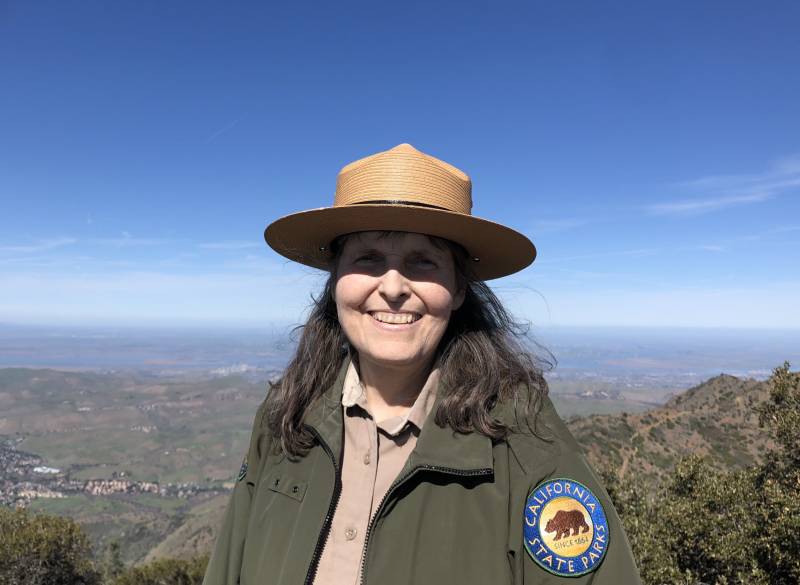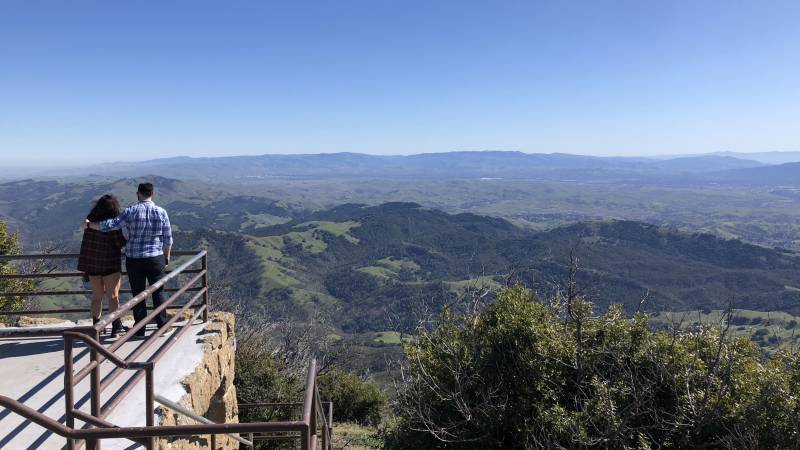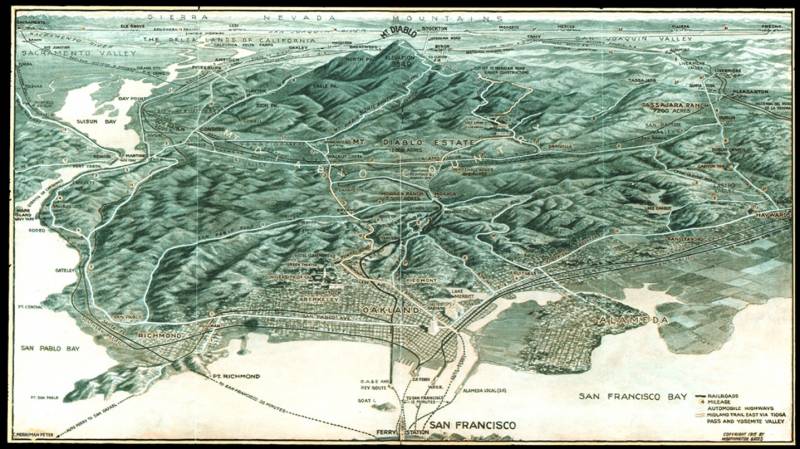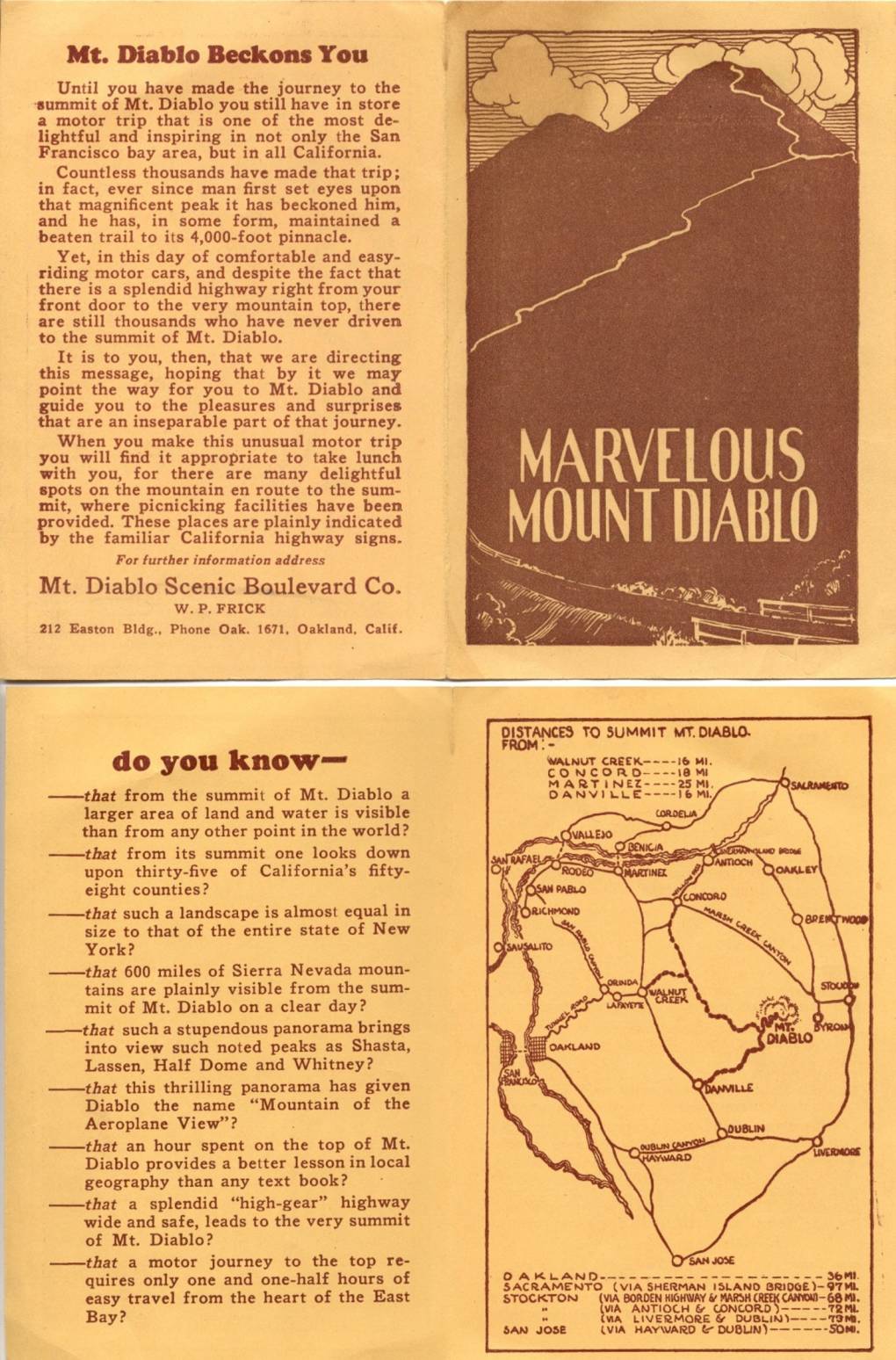Episode Transcript
This is a computer-generated transcript. While our team has reviewed it, there may be errors.
Olivia Allen-Price: When it comes to size – Mount Diablo is the Bay Area’s grandest landmark. It’s often the first glimpse of home you’ll see after a long drive.
It stands apart from other mountains nearby, not just because of its prominence, but because of the legends that surround it. The Bay Miwok tribe believe the mountain is sacred — that it is the central point of the world’s creation, where man was made.
But it’s a different story that caught the attention of listener Mark Isaak.
Mark Isaak: I’ve heard that the spot on the earth from which you can see the most land – not just ocean, but actual land – is the summit of Mount Kilimanjaro, but that the summit of Mount Diablo comes in second. Is that true?
Olivia Allen-Price: Mark heard this legend so long ago, he can’t remember where it came from. But he’s not alone. Lots of you have heard this story. And it does seem possible. Mount Diablo is an isolated peak, it’s a lot taller than everything else around it. So even though there are lots of taller mountains, they might not have as big of a view because other mountains get in the way.
From the top of Diablo you can see from the Pacific Ocean, all the way across the state to the Sierra. But second biggest view in the world … really?
Today we’re going to find out if Mount Diablo’s view deserves so remarkable an accolade, and explore the story behind the legend. This story first aired in 2020. I’m Olivia Allen-Price. This is Bay Curious.
SPONSOR MESSAGE
Olivia Allen-Price: OK, so we set out to learn if Mount Diablo is in fact numero dos on the list of places on earth where you can see the most land.
Reporter Asal Ehsanipour takes a winding road to find out.
[driving sounds]
Asal Ehsanipour: The mystery of the view from Mount Diablo is a romantic one – steeped in local legend. To find out if it’s true, I drove to the source itself.
[GPS: “IN 600 FEET…”]
Asal Ehsanipour: From the base of the mountain, it takes me about an hour to get to the top.
[car door shuts, locks]
Asal Ehsanipour (outside): Wow, that took so long.
Asal Ehsanipour: Mount Diablo sits on the Eastern Edge of the Bay Area – in Contra Costa County. But you can see its double peak pyramid from most spots around the Bay. At 3,849 feet, the mountain’s view is second to none. Well, it’s second to one… maybe. We’ll find out.
Sharon Peterson: So the view when you come up here is really amazing. How it compares to Kilimanjaro is up for debate. But I’m kind of partial to the view here from Mount Diablo and I think most people that come are pretty amazed by what the view looks like.
Asal Ehsanipour: My tour guide today is Sharon Peterson, Mount Diablo State Park’s interpreter – which, she says, means her job is to tell the story of the park.
[footsteps on a trail]
Asal Ehsanipour: Sharon takes me to the summit’s viewing deck. She says that on a clear day, you can see 40 of California’s 58 counties from here. As little as 1% of some. But still.
Sharon Peterson: This is where we walk out into the wind.
Asal Ehsanipour: First, she points west.
Sharon Peterson: So you can see the Golden Gate Bridge today. You could see both towers with the naked eye. And if I give you the binoculars, you can probably see it for sure.
Asal Ehsanipour: She whips them out and there it is. The Golden Gate Bridge, 60 31 miles away. Two towers peeking over Round Top in the Berkeley Hills.
Asal Ehsanipour (outside): Wow, that’s really cool!
Asal Ehsanipour: Then, we turn North. And you can see the Sacramento and San Juaquin rivers forming the Delta.
South, it’s a sweeping view of the Diablo Range and Livermore – Pleasanton.
And finally, East. Where through the haze we catch a glimpse of the snow-speckled Sierras rising above the Central Valley – over a hundred miles away.
Asal Ehsanipour (outside): And I heard that you can also see Yosemite from here.
Sharon Peterson: On a clear day you can. And with binoculars you can see Sentinel Dome. There is a rumor that you can see Half Dome, but it’s actually blocked by one of the land features in between here.
Asal Ehsanipour: Seeing it for myself, the site is so magnificent, so magical, that it feels like I’m looking down at a watercolor. The only thing that compares is the view from a plane. Maybe it’s possible the myth is true?
Seth Adams: It’s absolutely not true that Mt. Diablo has the largest view in the world except for Mount Kilimanjaro.
Asal Ehsanipour: Seth Adams is the Land Conservation Director at Save Mount Diablo. And he’s spent a lot of time mythbusting the Kilimanjaro claim.
Seth Adams: I never quite believed it. It just didn’t have the ring of truth to me because it’s a small mountain and common sense would tell you the taller the mountain, the bigger the view.
Asal Ehsanipour: But considering the myth has been repeated hundreds of times, he says it makes sense people would believe it. Seth traced the infatuation with Diablo back to the 1850s and 60s – when scientists like Josiah [Hosiah] Whitney first geologically surveyed the mountain. That’s Josiah Whitney of Mount Whitney – the tallest mountain in the Sierra Nevada.
Seth Adams: Josiah Whitney wrote, “It is believed that there are few, if any, points on the earth’s surface from which so extensive an area may be seen as from Mt. Diablo. The whole area thus spread out, can hardly be less than 40,000 square miles.”
Asal Ehsanipour: The legend snowballed from there. Repeated over and over for decades – through the end of World War II. A time when people started experiencing parks and mountains recreationally – and Mount Diablo became a go-to tourist spot. The Kilimanjaro claim circulated in travel guides and hiking maps. By railroad companies and auto associations. Even Contra Costa County described it as quote: “the world’s greatest view! More territory visible than from any point in the world.”
Asal Ehsanipour: But as visitors flocked to Diablo for the views, entrepreneurs saw a chance to make a buck.
Seth Adams: More than half of Mount Diablo was locked up successively by two big real estate land speculators. Both of them printed brochures by the thousands that included the claim of Mt. Diablo having the largest view in the world.
Asal Ehsanipour: Boasting that claim was a smart business move for one developer. In 1917, he had a dream of building thousands of homes on Diablo’s western flank, and those amazing views helped push forward his agenda. Eventually the developer went bankrupt and the deal flopped. But, it was too late. The brochures had done their work…
Seth Adams: Oh you can definitely credit the brochures with spreading the misinformation. It’s just too good to claim the largest view in the world, right. And understand that California was a promoter’s dream.
Asal Ehsanipour: Which brings us to another promoter… the entrepreneur Walter P. Frick, who hired a publicist to help him spread the rumor that Mount Diablo had the greatest view on earth. Especially as he built an 8 foot beacon tower known as the Eye of Diablo. But Frick was working with engineers from the Standard Oil Company… and they were skeptical.
Seth Adams: Someone for the first time said, “come on, biggest view in the entire world?”
Asal Ehsanipour: So after that – the 1928 Standard Oil Bulletin added a footnote to their brochure.
Seth Adams: “Except for a point in Africa.” Clearly being Mount Kilimanjaro.
Asal Ehsanipour: From there, the legend shifted from Mount Diablo having the largest view in the world, to the second largest. It went on like this until 1994 – when it was officially debunked by an engineer slash mountaineer who did the math. His name was Edward Earl, but he went by the nickname “7.389056099.” …Math joke.
Seth Adams: He said ‘I don’t believe this. And so what I’m gonna do is I’m going to define the problem and I’m gonna calculate view sheds for lots of other mountains and see how they compare.’
Asal Ehsanipour: Viewshed is “the area visible from a specific vantage point” including land or water. Now remember, Whitney speculated Diablo’s viewshed was about 40,000 square miles. But according to Earl’s calculations, it’s actually between 13,000 and 21,000. That might still sound like a lot, but from other, taller mountains you can see more than 3 times as much. And even for a total non-mathematician like me – it kind of makes sense. Mount Kilimanjaro is 5 times the size of Mount Diablo. So, Diablo couldn’t possibly have a comparable viewshed – even if it is an isolated peak.
Seth Adams: He conclusively showed the Mount Diablo viewshed claim was bogus. [laughs] But it doesn’t really matter because the claim had already done its work. Mt. Diablo became famous. It became beloved. And as I said, Mt. Diablo may not have the largest view in the world, but it certainly has the most extraordinary view in the world.
Asal Ehsanipour: And looking out from the summit, it is extraordinary. And luckily for us, extraordinary can’t be measured with math.
===
Olivia Allen-Price: That was reporter Asal Ehsanipour. Big thanks to Mark Isaak, our question asker this week. And hey — there’s a new voting round up at BayCurious.org. Let’s hear this month’s options…
Voice 1: I noticed a few older homes in Noe Valley/Mission/Glen Park with “Lipton Tea” on the window. It looks like they’re old corner stores. Any stories on why?
Voice 2: I would like to know how the effects of climate change in the San Francisco Bay impact the underwater sonic environment. Are there any bio-acoustic studies being done locally on this topic?
Voice 3: What is the history behind Ashland and Cherryland, two unincorporated communities in the East Bay? What defines an “unincorporated” community?
Olivia Allen-Price: Head to BayCurious.org to cast your vote for which question you’d like to see us answer next.
Bay Curious is made in San Francisco at member-supported KQED. Our show is produced by… Amanda Font, Christopher Beale, Ana De Almeida Amaral and Olivia Allen-Price. Special thanks to Katie McMurran, Jen Chien, Katie Sprenger, Maha Sanad, Holly Kernan and the whole KQED Family.
I’m Olivia Allen-Price. Happy trails.





